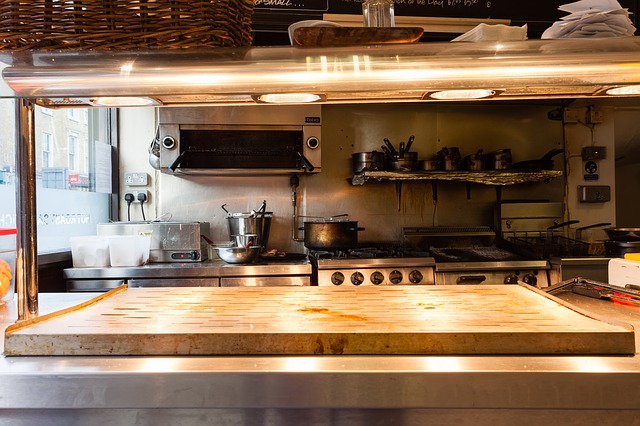In addition to helping to maintain your facility smelling nice, grease traps also help to ensure that your clients continue to return. They’re also frequently the source of the most frustration for eateries, especially if they’re not kept clean on a regular basis, which is the case with most.
Proper grease trap maintenance may help you keep your restaurant running smoothly, and a commercial plumbing service can help you avoid the unpleasant, expensive backups that can occur when fats, oils, and grease do not get caught before they reach the sewage system and clog it up completely.
The Things to Keep in Mind
Several factors will influence when and how often you should clean out your grease trap. Be aware of the capacity of your trap, how frequently it is used, and the number of people who will be seated before creating a cleaning plan.
In order to get started, make sure you have the necessary equipment:
- Gloves made of rubber — to keep your hands protected
- Gas mask or nose plug – to protect against the inhalation of toxic fumes.
- The use of coveralls can help to keep the FOGs from soiling your clothes.
- Lifting the grease trap lid with a crowbar and a wrench
- Cleaning the tank using a scraper is essential!
- To remove the FOGs, use a shop vacuum.
- Locate the position of the grease trap
Grease traps are found on the premises of the food establishment, either outside or inside. Manhole covers or the form of a septic tank might be used to identify outdoor traps. For restaurants that have interior grease traps, they are usually found in the basement, under a kitchen sink, or behind a metal flashing in the kitchen flooring.
- Identify the physical dimensions of the grease trap once you’ve located it
It is easier to determine whether you should hire a professional or clean the grease trap yourself if you know how much space the tank has to hold. It will take professional equipment and training to maintain a grease trap that holds 500 to 2500 liters. The cleaning of smaller grease traps can be done by restaurant employees who have been given permission.
- Cool water should be used during the project
To allow the fats, oils, and grease to float to the surface of the liquid; Wait 10 minutes after the hot wastewater from the dishwasher or sink has been released and has cooled.Carefully take the grease tank cover off to gain access to the infamous fats, oils, and greases. If you attempt to remove the cover without taking precautions, you risk damaging a delicate and vital component known as the gasket
Unless the grease trap cover is bolted down, the crowbar will come in handy at this stage. You’ll be confronted by a two-inch-thick film of greasy sludge when you go through the doors.
Using a scoop, scoop out the floating FOGs.
The water and remaining food solids will remain in the tank after all of the fats, oils, and greases have been hauled out and discarded.Removal of leftover particles and water is made easier with a strong shop vac. Until now, the most important duty has been completed. Scraping the baffles, sides, and lid of the trap is the next task.Remove any solidified grease particles that may have become caught in the trap’s recesses by sucking them out with the shop vacuum. The shop vacuum should be used to remove any leftover.
Clean the baffles, sides, and lid of the grease trap thoroughly
You may now put your skilled work to the test now that the most time-consuming element of the job is completed.You want to make certain that the grease trap is completely free of any traces of FOGs and that there are no blockages preventing water from freely draining.
Cleaning Commercial Grease Interceptors at Home: Steps to Follow
After you have successfully installed the grease trap in the proper area, it is necessary to clean the equipment on a regular basis to ensure proper operation. According to usage, a grease trap unit should be cleaned once or twice a month in most cases. The following are some simple and quick steps that will assist you in cleaning the equipment without the need to hire a grease removal specialist.
Remove the lid from the apparatus by using a wrench or a crowbar to pry it off. If possible, take care to separate the lid carefully so that the gaskets that are located just beneath the lid are not damaged.As previously explained, the grease will float to the surface of the water. So, using a shop vacuum, remove all of the grease. As the liquid levels decrease, this will prevent the grease from adhering to the sides and baffles.
After that, remove any remaining wastewater as well as any food solids that may have accumulated on the surface. Make sure that the dishwasher and sinks are not in use while you’re doing this. Also, keep a watch on your shop vacuum to make sure it doesn’t overfill and spill the grease on your floors.
Scrape away any grease waste that has accumulated on the lid, the tank’s sides, and the baffles with a scraping motion. Debris should also be removed from your grease interceptor, including any solidified fats and oils that might be preventing it from functioning properly.
Last but not least, reinstall all of the grease interceptor parts
To prepare the waste for the shop vacuum, combine the collected waste with kitty litter and allow it to solidify for several hours. After that, put the garbage in a trash bag and throw it away in the proper manner. In addition to being beneficial to your commercial kitchen, the use of grease interceptors is mandated by government regulations. Placing a grease trap in your restaurant can help to reduce the mess caused by grease and will aid in the growth of your company.
